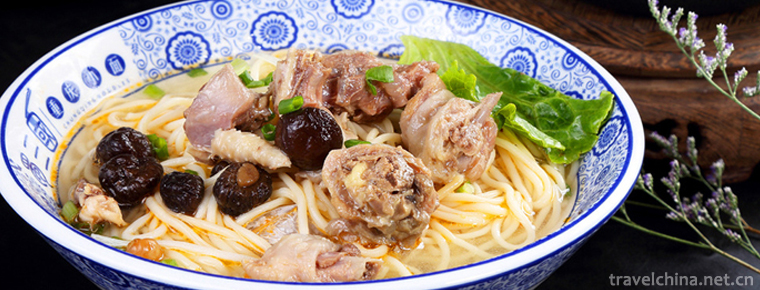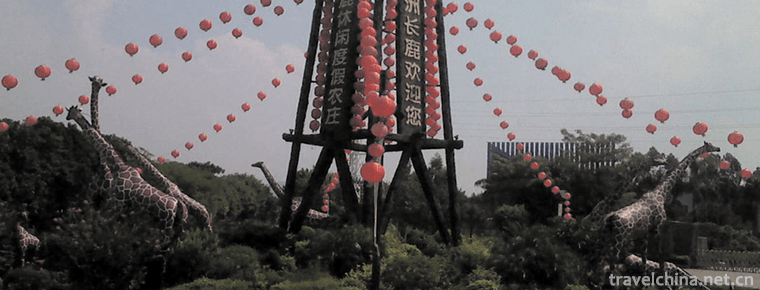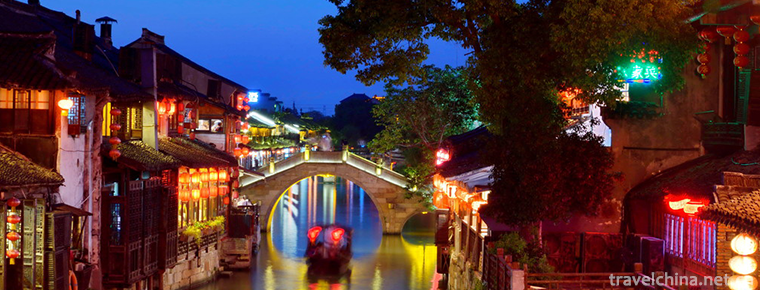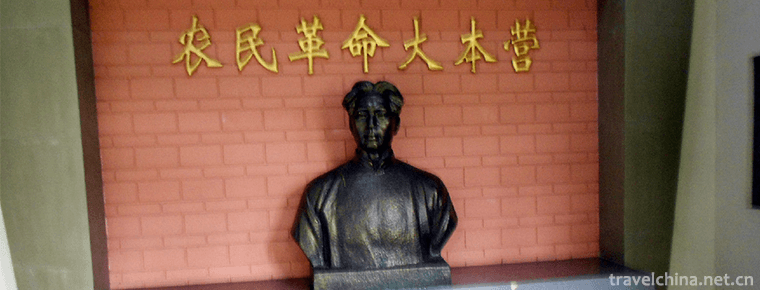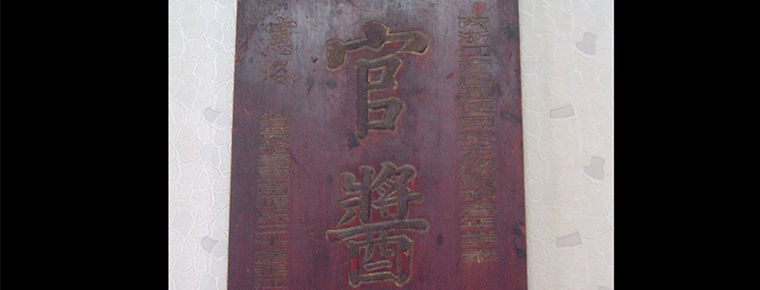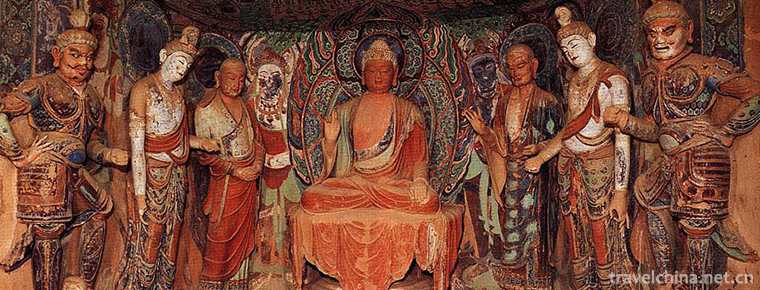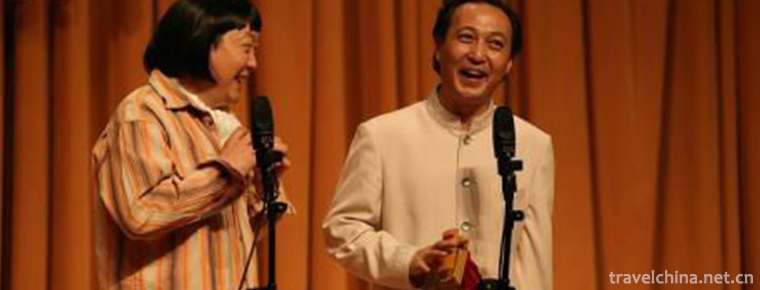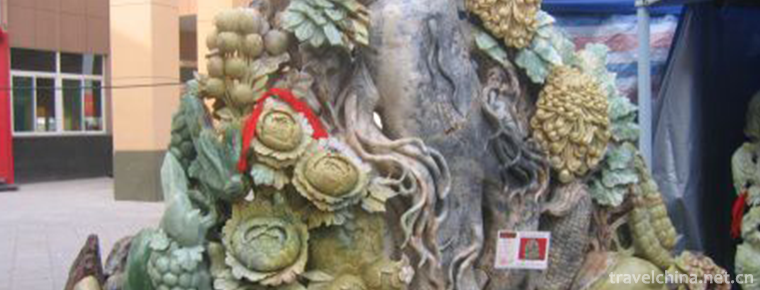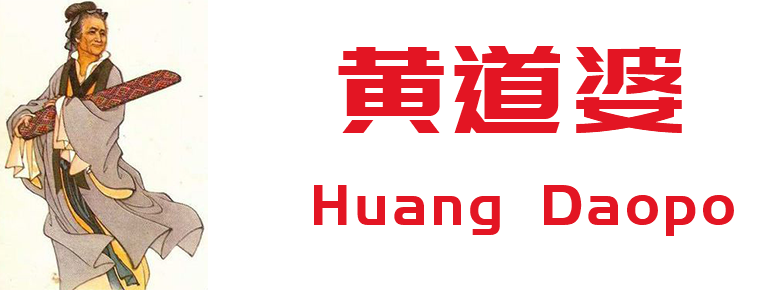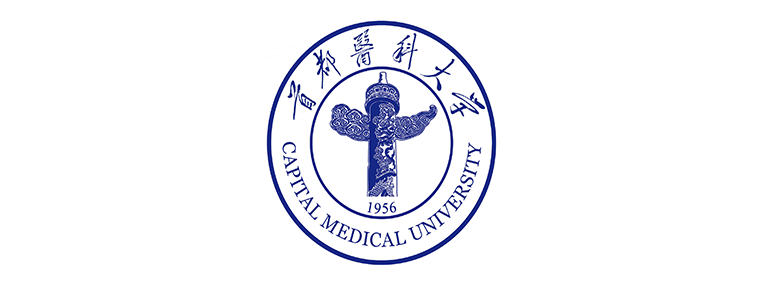Jingshan Park
Jingshan Park is located in Jingshanqian Street, Xicheng District, Beijing, on the central axis of the Ming and Qing Dynasties, west of Beihai, south of the Forbidden City Shenwumen across the street, is the imperial court of the Ming and Qing Dynasties. The Jingshan Hill in the center of the park is made up of earth and has been the commanding height of the whole city.
Jingshan Hill Park was built in 1928. The total area of the park is 23 hectares, of which the flower lawn covers 1100 square meters. The park is a national AAAA-class tourist attraction, the park has a lookout tower, five-square pavilion, Shouhuang Hall, Yongsi Hall, Peony Garden and other attractions. The park will stop selling tickets after September 28, 2018 when the park is full.
In ancient times, Jingshan Hill and Beihai were all old roads of Yongding river. The Jingshan Hill now has a high elevation and gradually becomes a hillock after the Yongding river is diverted. Liao Yu built the palace of the Yao Island (today's Beihai Park Qiong Hua Island), the remaining soil here. In the nineteenth year of Dading in the Jin Dynasty, Jin Zhangzong built Taining Palace on the south side of the area, dug Xihuatan (now Beihai), piled up hills and built Royal gardens, called "Beiyuan". Its hills are surrounded by two walls, and the building of Yao Guang Lou on the mountain is called one of the twelve scenes of Jin Zhong Du.
In the middle of the 13th
century, Kublai Khan, the ancestor of the Yuan Dynasty, built the metropolis in
the fourth year of the Yuan Dynasty (1267). Tuqiu area was located in the
center of the metropolis, and the core building of the palace, Yanchun
Pavilion, north of it, was set up as a "backyard" for the emperor to
visit. There are 80 thousand square meters in the court. The yuan emperors once
worked here to show the world. The original golden hill is called "Castle
Peak" as the name of the mounds. There are also claims that the Yuan
Dynasty is also known as "Zhen Shan".
In the early years of Hongwu in the Ming Dynasty (1368), Lang Zhongxiao Xun of the Ministry of Works participated in the demolition of the Palace Museum of the Yuan Dynasty, visiting the scenery of the Houyuan and the buildings of the Golden Hall, the Cui Hall, the Flower Pavilion and the felt pavilion. During the Yongle years, Ming Dynasty founder Yongle built large cities, palaces and gardens in Beijing. According to the theory of "Canglong, White Tiger, Suzaku, Basalt, the Four Spirits of Heaven, and the Four Squares of Heaven", the north of the Forbidden City is the place of Basalt, which should be a mountain. Therefore, the excavation of the Forbidden City Tongzi River and Taiye, the South China Sea mud accumulation in the "green mountains", forming five peaks, known as "Wanshishan. At the beginning of the Ming Dynasty, the imperial court piled up coal in Jingshan Hill to prevent fuel shortages in the Beijing besieged by the Yuan Dynasty. Therefore, the mountain is also known as "coal mountain". According to the Ming Dynasty Jiajing years of "Beijing Palace Map" (hidden in the library of Northeast University in Miyagi Prefecture, Japan), here is also known as "Zijin Mountain.
On March 19, 1644, Emperor Chongzhen of the Ming Dynasty conquered the city of Beijing and killed himself in Jingshan. The Li Zicheng army invaded Beijing. Ming Si Zong Zhu died from a long old tree at the foot of Shandong. After the Qing Army entered the customs, in order to attract people's hearts, the locust tree was called a "sinful locust" and was locked in chains. It was also stipulated that all members of the Qing royal family should dismount and walk through the place.
Shunzhi eight years (1651), the hooray mountain is renamed Jingshan Hill. Qianlong built a tower in front of the mountain, and built five square Buddha Pavilion on the mountain. There are Wanchun Pavilion in the center, Guanmiao Pavilion in the East and Zhou Fang Pavilion in the west. After the mountain to rebuild the building of the Longevity Palace. And set up a monument on the east slope of Jingshan Hill. During the reign of Emperor Qianlong, the architecture of Jingshan reached its most brilliant and prosperous stage. Since Jingshan gardens were classified as an important part of the palace since the Yuan Dynasty, all the buildings were built according to the rules of the palace. The grade was so high, the shape was different, and the original appearance was kept intact.
During the Boxer Incident of Guangxu 26 (1900), the Eight-Power Allied Forces occupied Beijing and Jingshan was seriously damaged. After entering the city, the French troops first went up Jingshan, and more than ten people guarded the gate of the garden to keep the Japanese from entering. They let the Russian troops in before they let the Japanese in. Among the Buddha statues in the five pavilions of Jingshan Hill, four were swept away and all the treasures in the palace were ransacked. After the emperor's return, the Jingshan Hill is no longer fashionable. After Emperor Xuan Tong abdicated, according to the conditions of the Qing Dynasty, Keiyama Yukiyo's royal family was used. In the 13 years of the Republic of China (1924), Feng Yu Xiang occupied the Jingshan Hill and erected cannon to drive Puyi out of the palace. Since then, Jingshan Hill has been deserted and often has troops stationed.
In the 17th year of the Republic of China (1928), Jingshan was opened as a park, under the management of the Palace Museum, repaired for visitors to see. Article 1 of the Regulations on the Organization of the National Peiping Palace Museum before the Amendment of September 25, 1947: "The National Peiping Palace Museum, directly under the Executive Yuan, administers all the buildings of the Old Forbidden City within Tian'anmen Gate, the Great Hall of the Qing Dynasty, the Temple of the Taimiao Mountains, the Emperor's History and the Qing Hall, and the collection of ancient books and documents." Manage the exhibition circulated. " This provision is similar to that stipulated in the 23 years of the Republic of China and the 25 years of the Republic of China.
After the founding of the People's Republic of China, from 1950 to 1955, Jingshan was briefly used by the army as an air defense position of the Air Defense Command of the North China Military Region. Radars and searchlights were installed. On October 29, 1954, the Central Secretariat of the New Democratic Youth League of China sent a letter to Liu Lantao and Peng Zhen, Xi Zhongxun, Lu Dingyi, Yang Shangkun and Xiaohua of the Central Committee of the Communist Party of China, requesting that the air defense position of the Air Defense Command of the North China Military Region of Jingshan Park in Beijing should be rebuilt into a Beijing Children's Cultural Park after being evacuated. Places such as the Children's Palace and the Children's Stadium shall be jointly managed by the Beijing Municipal Bureau of Education and the League Municipal Committee, or jointly managed by the Ministry of Education and the League Central Committee. In December 12th, Peng Zhen wrote to Liu Lantao and Hu Yaobang, and agreed to turn Jingshan Hill into a children's palace. In June 1, 1955, the children's palace of Beijing was put into operation.
In July 16, 1955, Jingshan Hill Park began greeting visitors again. In 1957, under the direct leadership of Zheng Tianxiang, the Party group of the Capital Planning Committee put forward a series of policies of resolute protection for a series of ancient buildings with the Palace Museum as the main body in the preliminary plan of the 1957 Master Plan, and maintained the original area of the Tiantan, Beihai, Jingshan, and the Summer Palace to prohibit occupation. In 1957, Jingshan Hill was listed as the first batch of cultural relics protection units in Beijing.
During the cultural revolution of 1966, the red guards in the great tandem and the Jingshan Hill park were renamed the Red Guard park. (Beihai park is called "worker peasant soldier Park"). It was closed from February 21, 1971 until March 1, 1978. In 2001, Jingshan Hill was listed as a national key cultural relic protection unit. In 2003, Beihai Jingshan Park Management Office was divided into two parts, and an independent Jingshan Park Management Office was established, which belongs to Beijing Park Management Center.
There are more than 1,000 ancient pine and cypress plants in the garden, planting tens of thousands of peony, peony and other flowers, three-season flowers cluster, four-season pine and cypress evergreen. With frequent flower and bonsai exhibitions and cultural events, this ancient imperial garden is full of new era vitality.
Jingshan Park Scenic Spot Jingshan Park is a park on the central axis of Beijing, belonging to the West District, in the Palace Museum north of Shenwumen. Jingshan Hill park is dominated by Jingshan Hill. The pine and cypress in the park are luxuriant and green, and there are peonies introduced from all over the country.

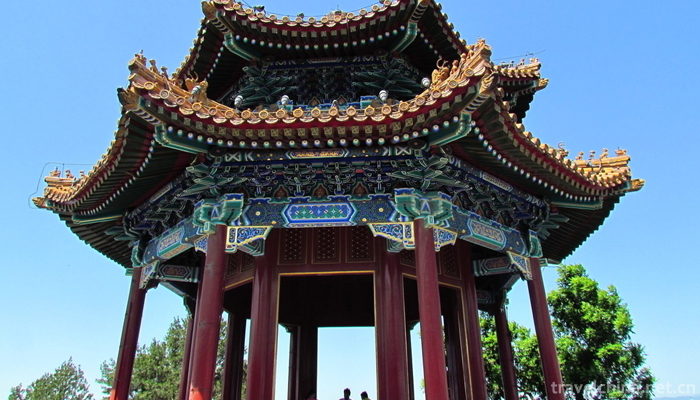
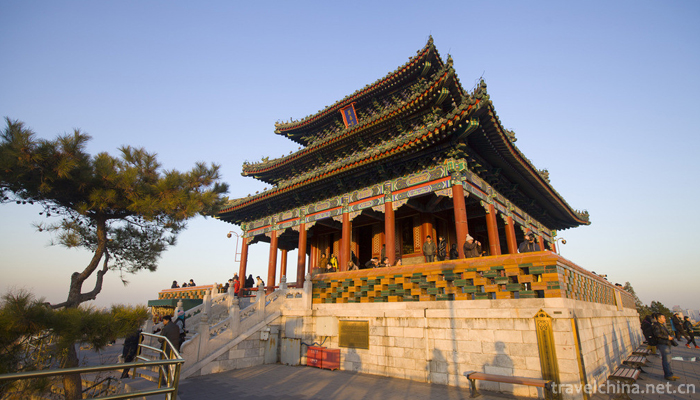
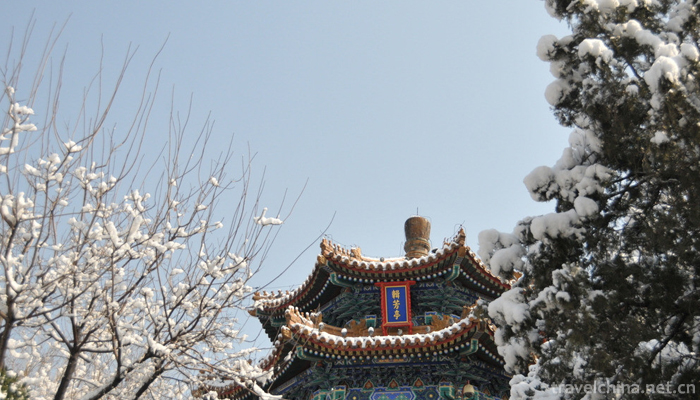
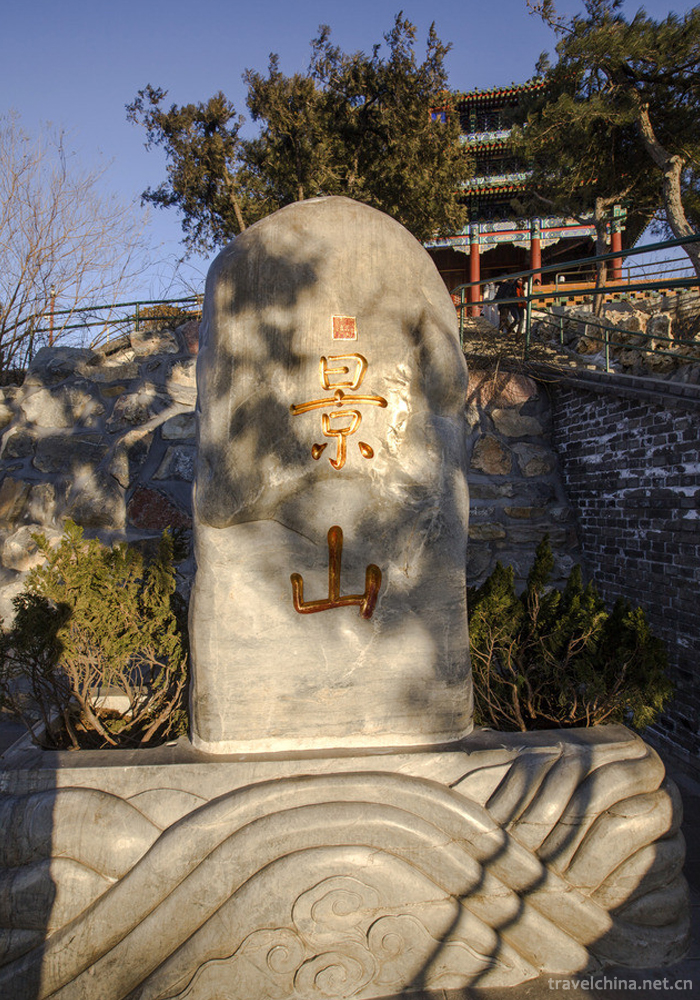
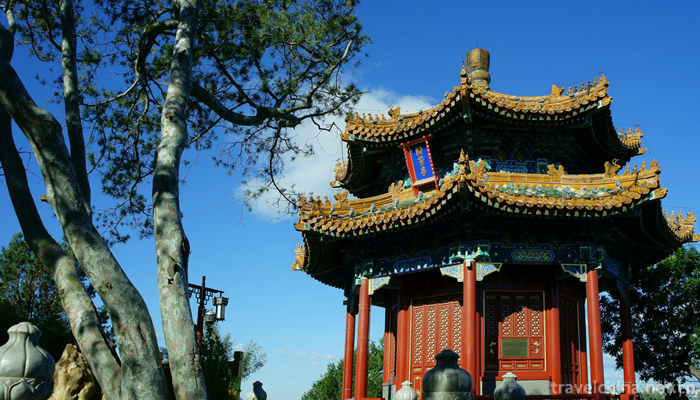
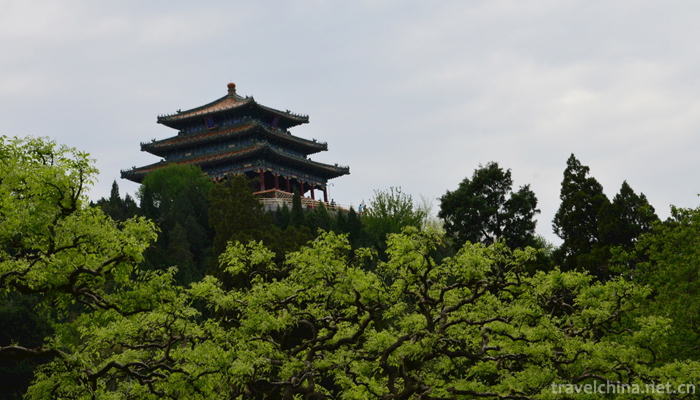
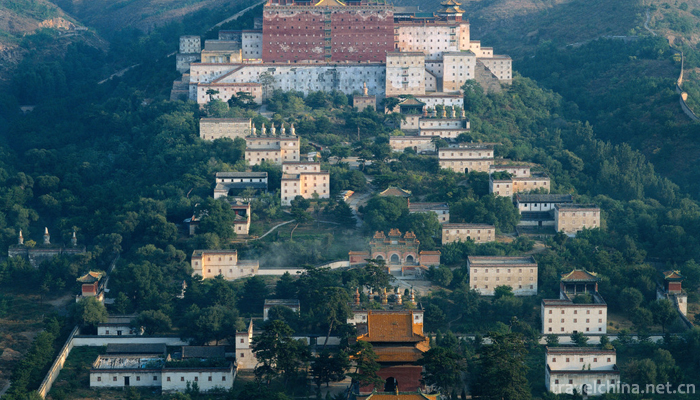
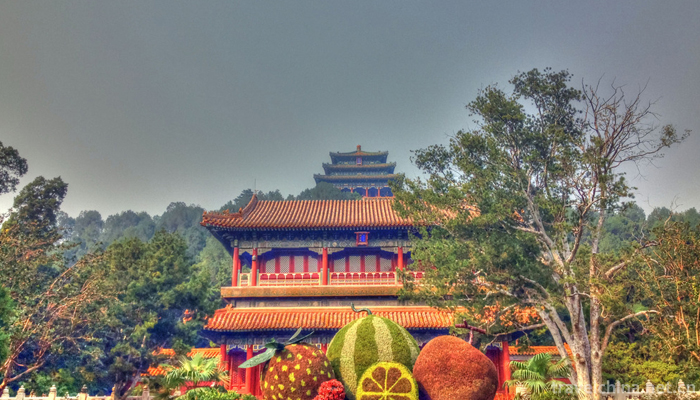
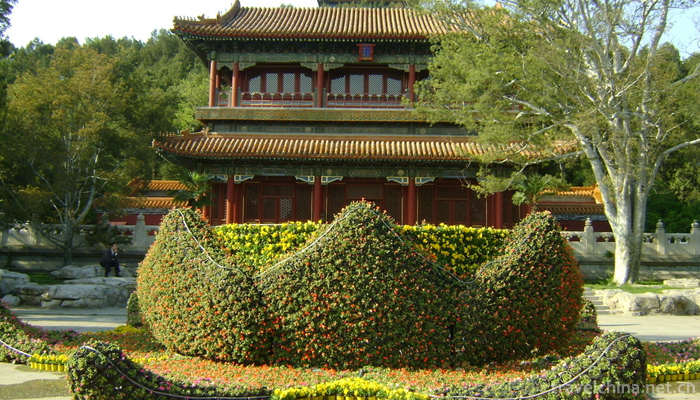
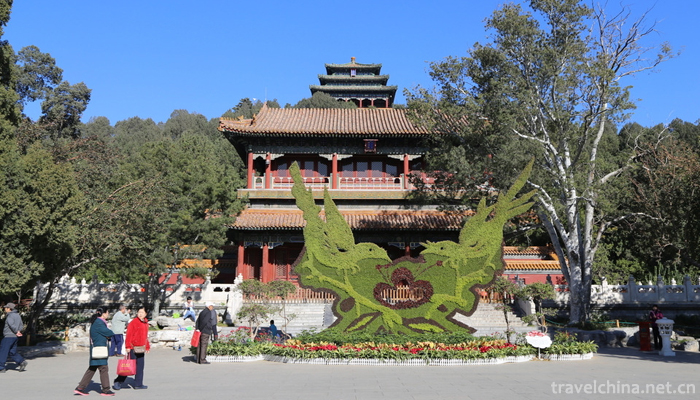
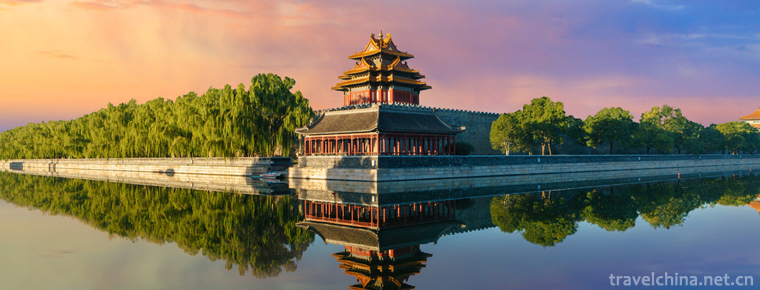
Jingshan Park
-
Letinous edodes chicken Noodles
Letinous edodes stewed chicken originated in Northern Jiangsu
Views: 165 Time 2018-10-12 -
Chuanlord Tourism & Leisure EXPO Park
Chuanlord Tourism & Leisure EXPO Park ,Changlu Tourism Xiubo Park, or Changlu Environmental Protection Holiday Farm (hereinafter referred to as "Changlu Farm")
Views: 519 Time 2018-12-12 -
Ancient town of Tangqi
Tangqi Town, located in the northern part of Hangzhou City, borders Deqing County of Huzhou City, is about 20 kilometers away from the city centre and 13 kilometers away from Linping
Views: 325 Time 2019-02-13 -
Wuhan Revolutionary Museum
The Wuhan Revolutionary Museum is located at No. 13 Hongxiang, Wuchang, Wuhan, Hubei Province. It was merged by the memorial hall of the former site of the Wuchang Peasant Movement Workshop
Views: 199 Time 2019-02-24 -
Brewing technology of soy sauce
Qian Wanlong soy sauce brewing technology is the traditional soy sauce brewing technology of Shanghai Bengang, and it is an ancient local traditional handicraft technology.
Views: 115 Time 2019-05-06 -
Clay sculpture
Clay sculpture, commonly known as "color sculpture" clay sculpture art, is an ancient and common folk art in Chinese folk tradition. That is to say, a kind of folk handicraft made of clay mo
Views: 158 Time 2019-06-07 -
Shulaibao
Shulaibao, a traditional Chinese folk art. Popular in northern China, the source is a means for beggars to ask for money. One or two people sing. Beat with a bamboo board or with a copper bell attache
Views: 255 Time 2019-06-15 -
Xiuyan Jade Carving
Xiuyan Jade Carving, one of the national intangible cultural heritage, is a local traditional art in Xiuyan Manchu Autonomous County, Liaoning Province.
Views: 154 Time 2019-07-08 -
Huang Daopo
Huang Daopo (1245 - 1330), also known as Huang Po , Yellow mother , Songjiang prefecture Wu Najing town (now Xuhui District, Shanghai) Huajing town People, famous at the end of Song Dynasty and early
Views: 143 Time 2019-09-07 -
Capital Medical University
Capital Medical University (Capital Medical University), known as the first Medical University, is jointly established by the Beijing Municipal People's government, the national health and Health Comm
Views: 160 Time 2019-11-26 -
Yibin Jiuzhou tower
Jiuzhou tower was built in the third year of Daguan in Northern Song Dynasty, that is, in 1109 ad, located in Yibin, Sichuan Province. The foot of the tower is 7.35 meters long from north to south
Views: 338 Time 2020-10-16 -
Nanchong scenic spot
The national 5A tourist attraction is located in Ma'an Town, Yilong County, with a total planning area of 52.5 square kilometers. The core scenic area with the former residence of Zhu De, the birthplace of Zhu De and the memorial hall of former residence of Comrade
Views: 334 Time 2020-12-17
